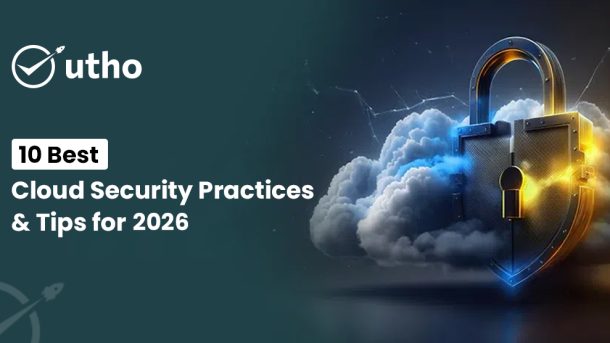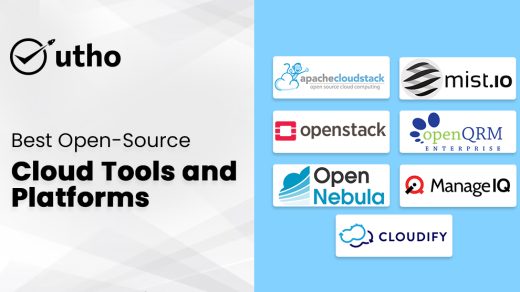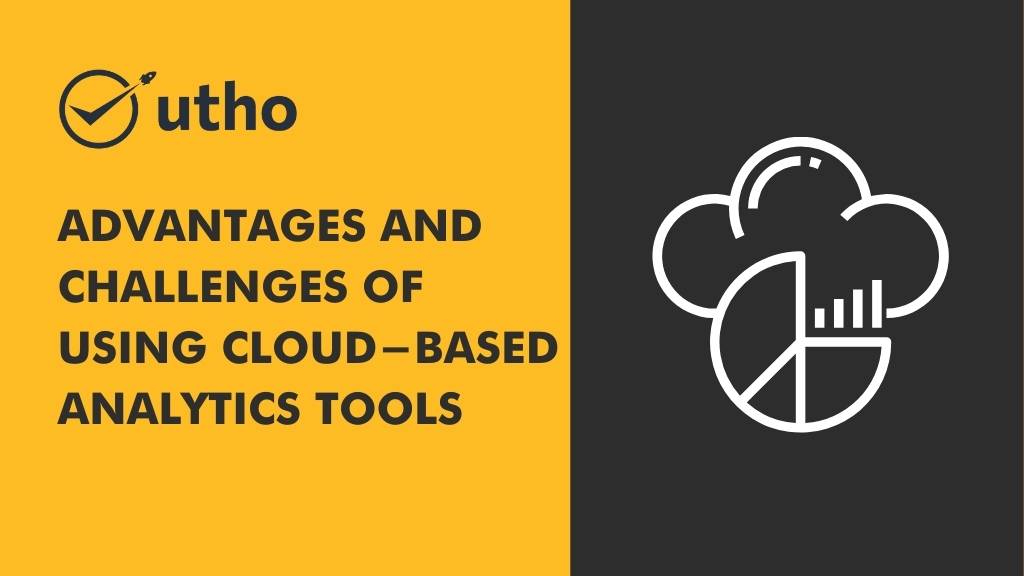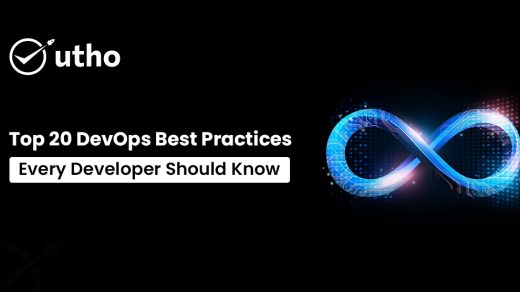As organizations rely more on the cloud for digital transformation, cloud security is a top priority in 2026. A recent Cloud Security Alliance survey found 65% of security and IT pros cite cloud security as a top concern. This figure may rise as businesses face a more complex threat landscape.
With the rise of multi-cloud and hybrid cloud models, securing diverse cloud environments is now harder but vital. It protects sensitive data and ensures compliance with regulations.
A report by ISC2 says that as businesses adopt cloud services, they face new security risks. These include identity theft, data breaches, and vulnerabilities from misconfigurations.
To address these challenges, organizations must adopt cloud best practices. They must protect against current and emerging threats.
In 2026, cloud security goes beyond basic encryption and firewalls. It requires a proactive approach. This includes IAM, continuous monitoring, and a zero trust model. Also, the rise of generative AI is reshaping security strategies. It helps to detect and respond to threats more efficiently.
To maximize AI-driven security, companies must first build strong security practices.
This blog will outline the top 10 cloud Security best practices for 2026. Organizations should use them to safeguard their cloud environments. These practices will ensure a secure, compliant, and resilient cloud infrastructure, helping businesses stay ahead of evolving cyber threats while maintaining the integrity and availability of their digital assets.
1. Implement Identity and Access Management (IAM)
How to Implement: IAM is key to securing cloud environments. It involves setting up permissions to ensure only authorized users can access specific resources. In practical terms, this means:
- Using Multi-Factor Authentication (MFA): MFA improves security. It requires users to verify their identity with a second factor, like a mobile device.
- Role-Based Access Control (RBAC): Create roles and assign permissions based on job functions. This ensures users have only the access they need (the principle of least privilege). Use native IAM tools from cloud providers, like AWS IAM, Azure AD, or Google Cloud IAM.
- Use CloudTrail in AWS or Cloud Audit Logs in GCP to monitor access logs. They track who accessed what and when. Automated alerts for unusual access attempts can help. They can quickly identify and respond to security incidents.
Why It’s Important: IAM reduces the risk of unauthorized access and data breaches. This is vital in cloud environments, where access is spread across many users and services. A 2026 report by the Cloud Security Alliance found that 78% of data breaches involve compromised user credentials.
By implementing strict access controls, organizations can significantly minimize this risk.
Best For:
- Large Enterprises: IAM controls access to sensitive data in complex hierarchies.
- Startups and SMEs: As these businesses scale, managing who has access to resources becomes critical. IAM provides a scalable approach to managing user permissions effectively.
2. Enable Continuous Security Posture Management (CSPM)
How to Implement: Continuous Security Posture Management (CSPM) uses automated tools. They ensure a cloud environment is secure and compliant with security policies. Practical steps include:
- Deploying CSPM Tools: Tools like Prisma Cloud and AWS Security Hub can detect misconfigurations, security risks, and policy violations in real time. They do this automatically.
- Automated Remediation: CSPM tools often can automatically fix common misconfigurations. These include open storage buckets and misconfigured network security groups.
- Establishing Baseline Security Policies: Define and enforce policies for a secure cloud environment. These policies should align with industry standards like ISO 27001 or frameworks like the CIS Benchmarks.
Why It’s Important: With the increasing complexity of multi-cloud and hybrid environments, it’s easy for security gaps to emerge. CSPM provides continuous visibility into these environments. It ensures compliance and reduces the risk of data breaches from misconfigurations. A 2026 report from Tenable found that 42% of organizations using CSPM tools saw fewer security incidents from cloud misconfigurations.
Best For:
- Organizations with Multi-Cloud Strategies: CSPM tools give a unified view across cloud platforms. They make it easier to monitor and manage security.
- Regulated Industries: In sectors like healthcare and finance, compliance is key. CSPM automates compliance checks and generates audit reports.
3. Adopt a Zero Trust Security Model
How to Implement: Zero Trust is a security framework that operates on the principle of "never trust, always verify." It assumes that no user or system, whether inside or outside the network, should be trusted by default. Here’s how to implement Zero Trust for cloud environments:
- Segment Your Network: Divide your network into smaller zones. This will isolate sensitive data and apps. This limits lateral movement. If a threat actor accesses one part of the network, they can't easily move to others.
- Use Strong Identity Verification: Use IAM with MFA to verify all access requests, both internal and external.
- Use AWS CloudWatch, Azure Monitor, or third-party tools to track all access attempts and movements in the network. Automated alerts for abnormal behavior can help quickly identify potential breaches.
Why It’s Important: The Zero Trust model is crucial in 2026 due to the increasing complexity of cloud environments and the rise of remote work. With traditional network perimeters gone, a Zero Trust approach is vital. It requires scrutiny of every access request. This reduces the risk of insider threats and external attacks. A Tenable report found that Zero Trust cut unauthorized access breaches by 60%.
Best For:
- Remote Workforces: Employees use cloud resources from various locations. Zero Trust ensures secure access.
- Businesses with Sensitive Data: Companies in healthcare, banking, and government handle sensitive data. They benefit from Zero Trust's strong security controls.
4. Encrypt Data at Rest and in Transit
How to Implement: Encrypting data in the cloud is a best practice. It protects data stored in, and moving through, cloud environments. Effective implementation includes:
- Use Strong Encryption Standards: Encrypt data at rest with AES-256. It is the gold standard for data security. For data in transit, use TLS (Transport Layer Security) protocols to secure communications.
- Use cloud-native key management services to store encryption keys securely. Examples are AWS Key Management Service (KMS) and Azure Key Vault. Rotate keys regularly to prevent unauthorized access.
- Use End-to-End Encryption: For data transfers, use end-to-end encryption. It keeps data encrypted throughout its journey, preventing interception.
Importance: Encryption makes data unreadable to attackers, even if intercepted. This is especially critical for businesses handling personal information or intellectual property. A 2026 report by the Cloud Security Alliance found that over 58% of companies faced stricter data encryption rules. This highlights the need for strong encryption practices.
Best For:
- Businesses Handling PII: E-commerce sites and healthcare providers must comply with data rules, like GDPR and HIPAA. They require data encryption.
- Financial Services: Banks and fintech firms use encryption to secure transaction data. It protects sensitive customer information, ensuring trust and compliance.
5. Regularly Conduct Vulnerability Assessments and Penetration Testing
How to Implement: Vulnerability assessments and penetration testing are vital. They are best practices for cloud security. They help find and fix potential weaknesses in cloud environments. Here’s how you can integrate these practices effectively:
- Schedule Regular Vulnerability Scans: Use automated tools like Nessus or Qualys. You can also use cloud-native services. They include AWS Inspector, Azure Security Center, and Google Cloud Security Command Center. These tools help scan your cloud environment for known vulnerabilities and configuration issues.
- Hire Certified Ethical Hackers: Use ethical hackers to test your cloud infrastructure. They can be internal or third-party. These tests simulate real-world attacks. They find security gaps that automated tools might miss.
- Incorporate Security in DevOps: Use DevSecOps. It ensures that vulnerability scans are part of the CI/CD process. This approach lets us find and fix security flaws in development.
Importance: This cloud best practice helps prevent breaches. It identifies weaknesses before attackers can exploit them. The 2026 ISC2 Cloud Security Report says over 40% of cloud security incidents could have been avoided with regular vulnerability assessments.
These practices keep your cloud infrastructure secure and compliant with industry rules.
Best For:
- Highly Regulated Industries: Cloud best practices help finance, healthcare, and government organizations. They meet strict compliance standards, like PCI-DSS and HIPAA.
- Custom Cloud Application Environments: Businesses developing custom cloud apps should prioritize penetration testing. It can find vulnerabilities that standard automated scans might miss.
6. Implement Multi-Layered Data Backup and Disaster Recovery Plans
How to Implement: Having a robust backup and disaster recovery plan is another essential cloud best practice. This strategy keeps data and business running during unexpected events, like disasters or breaches. Key steps include:
- Use Multi-Region and Multi-Zone Backups: Use cloud services to back up data in multiple regions. For example, use AWS S3 cross-region replication, Azure Backup, or Google Cloud Storage replication. This practice ensures that even if a disaster strikes one region, data can be quickly recovered from another.
- Define RTO and RPO. Set clear RTO and RPO metrics to guide your disaster recovery strategy. These metrics dictate how fast you need to recover and how much data loss is acceptable, helping you design an effective backup solution.
- Test and Update DR Plans Regularly: Run disaster recovery drills. They will ensure your backup and recovery processes work as intended. Update your DR plans regularly to address new threats and changes in the cloud.
Why It’s Important: A good disaster recovery plan is vital. It minimizes downtime and data loss during an incident. This cloud best practice helps businesses recover quickly from disruptions. It ensures continuity and maintains customer trust. The Cloud Security Alliance says 48% of organizations in 2026 view disaster recovery as vital to their cloud security.
Best For:
- E-commerce and SaaS companies rely on uptime and customer access. They benefit from these cloud best practices. They help keep services available during outages.
- Global Enterprises: Multi-nationals operating in various regions need a strong backup strategy. It must ensure data availability, compliance, and smooth disaster recovery.
7. Enable Continuous Monitoring and Log Management
How to Implement: Continuous monitoring is a key cloud best practice. It helps maintain a secure cloud environment. It involves tracking activities in real time. This detects anomalies and security threats. Here's how to effectively implement this practice:
- Use Cloud-Native Monitoring Tools: AWS CloudWatch, Azure Monitor, and Google Cloud Operations Suite. They monitor cloud resources in real-time. They can track metrics, send alerts, and integrate with other security tools. This gives a complete view of your cloud infrastructure.
- Centralize Log Management: Use AWS CloudTrail, Azure Log Analytics, or Google Cloud Logging for logs. These tools combine logs from various cloud services into one dashboard. This makes it easier to analyze user activities, API calls, and system events.
- Set Up Automated Alerts: Use anomaly detection and alerts to notify your security team of unusual activity. This ensures a quick response to threats, like unauthorized access or unusual network traffic.
Why It Matters: Best cloud practices require constant monitoring and log management. They help detect and respond to security incidents quickly. A report by eSecurity Planet says that strong monitoring cuts breach detection time by 40%.
It gives real-time visibility into your cloud. It helps prevent data breaches and ensures compliance with regulations.
Best For:
- Organizations with Dynamic Workloads: Businesses that often scale their cloud resources need continuous monitoring. It helps ensure that new deployments are secure.
- Financial Services and Healthcare: Industries with strict rules can use continuous monitoring to maintain audit trails and meet regulations. This is a key cloud best practice.
8. Implement Cloud Security Posture Management (CSPM)
How to Implement: CSPM tools find and fix risks in cloud infrastructures. This cloud best practice helps ensure compliance in complex cloud environments. It also provides visibility. Steps for implementation include:
- Deploy CSPM Tools: Use CSPM tools like Prisma Cloud, AWS Security Hub, or Microsoft Defender for Cloud. These tools monitor your cloud configs and fix any security risks.
- Set Up Compliance Policies: Define and enforce CSPM security policies. They must align with industry standards like NIST, ISO 27001, or GDPR. This keeps your cloud resources compliant with internal policies and external regulations.
- Automate Remediation Processes: CSPM tools often have workflows to fix common misconfigurations. These include public exposure of storage buckets and unencrypted databases. Automating these fixes reduces the manual effort required to maintain a secure cloud environment.
Why It’s Important: CSPM is a key cloud best practice. It gives ongoing visibility into your cloud security. It also helps reduce risks from misconfigurations, a leading cause of data breaches. A 2026 report by Cross4Cloud found that organizations using CSPM tools saw a 32% decrease in cloud security incidents
It ensures that your cloud environment is not only secure but also compliant with evolving security standards.
Best For:
- Multi-Cloud Environments: Businesses using multiple cloud platforms greatly benefit from CSPM. It provides a unified view of security across all platforms.
- Enterprises in Regulated Sectors: CSPM tools automate compliance checks. This helps firms in finance, healthcare, and retail meet industry regulations.
9. Adopt a Secure DevOps (DevSecOps) Approach
How to Implement: A key cloud best practice is to integrate security into the DevOps process, known as DevSecOps. It ensures security is considered throughout the software development lifecycle. Key steps include:
- Automate Security Testing: Use tools like Snyk or Aqua Security. Or use cloud-native solutions, such as AWS CodePipeline or Azure DevOps. They will automate vulnerability scans during the build, test, and deployment stages. This helps identify issues before they make it into production.
- Embed Security in CI/CD Pipelines: Add security checks to CI/CD pipelines. This ensures that every code change is tested for security compliance before deployment.
- Collaborate Across Teams: Foster teamwork among development, operations, and security teams. Using shared dashboards and communication tools helps. They ensure everyone knows the security risks of their work.
Why It’s Important: DevSecOps is a key cloud best practice. It lets organizations deliver apps quickly, without sacrificing security. DevSecOps automates security checks. It helps find vulnerabilities early in development. This cuts the cost and time of fixing them. A 2026 Cloud Security Alliance study found that 67% of organizations had fewer security incidents after adopting DevSecOps.
Best For:
- Tech Startups: Fast-growing startups can benefit from DevSecOps. It ensures security is built into their products from the start.
- Frequent Deployments: SaaS providers benefit from DevSecOps. It offers automated checks and continuous improvement.
10. Secure APIs and Microservices
How to Implement: APIs and microservices are key to cloud architectures. But, they add new security risks. Adopting secure practices for managing APIs is a vital cloud best practice. Steps include:
- Implement API Gateways: Use API gateways like AWS API Gateway, Azure API Management, or Kong to control and monitor API traffic. Gateways help manage rate limits, authentication, and data validation, preventing potential abuse.
- Use OAuth and API Tokens: Secure APIs with OAuth, OpenID Connect, or API tokens. This ensures that only authenticated users or apps can access the services. This helps in maintaining a secure and streamlined authorization process.
- Regularly Audit and Monitor APIs: Conduct security audits on APIs. This will find vulnerabilities, like improper data handling or exposed endpoints. Use tools like Postman or OWASP API Security Project recommendations to guide your audit process.
Why It’s Important: APIs are a common target for cyberattacks, especially in cloud environments that rely on microservices. In 2026, securing APIs is a critical cloud best practice because APIs serve as the entry point to sensitive data and services. A report by eSecurity Planet found that 41% of companies blamed unsecured APIs for cloud data breaches.
Proper API security ensures that these access points do not become vulnerabilities.
Best For:
- Businesses Using Microservices Architectures: Companies that build apps with microservices rely on APIs. This cloud best practice is vital for secure interactions between services.
- E-commerce and Financial Services: APIs in industries that handle financial transactions must be secure. This prevents unauthorized access and protects customer data.
Conclusion: Elevating Your Cloud Security in 2026
Cloud environments are key to digital transformation. So, cloud best practices are vital for strong security. Managing identity access with IAM, adopting Zero Trust, implementing CSPM, and securing APIs are all crucial. Each practice protects your cloud infrastructure. In 2026, organizations must address vulnerabilities. They must also ensure data resilience with strong disaster recovery plans. This will help them stay ahead of evolving threats.
As you seek secure, reliable cloud providers, prioritize performance and security. Utho stands out as a cloud platform that goes beyond just offering scalable and cost-effective solutions. Utho's secure architecture and support for Indian firms protect your data and apps from new threats. Utho is a great partner for any business. Its cloud security and easy-to-use services strike a balance of security, cost, and performance. This applies to both startups and established firms.
Utho is committed to the highest security standards. You can confidently adopt our cloud best practices. Our platform is secure and reliable. It supports your growth and innovation. Partner with the right provider. Use a strong security plan. Then, you can unlock the cloud's full potential and keep your data safe.




